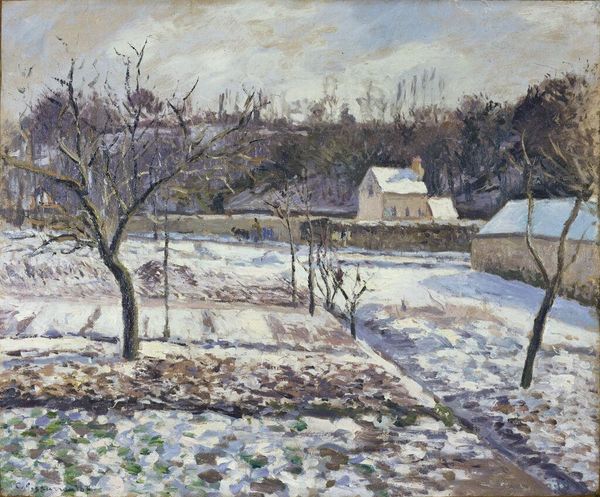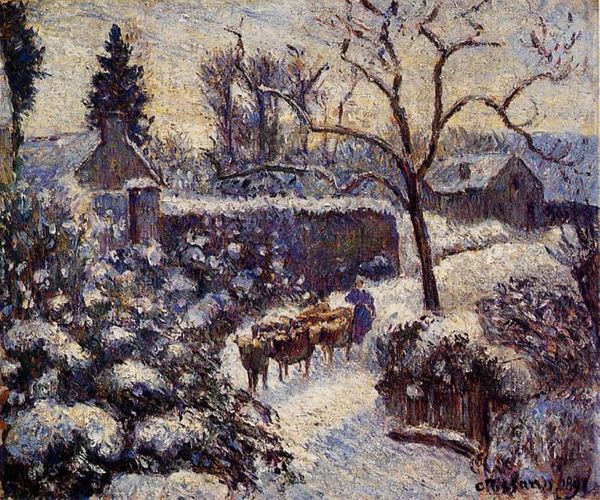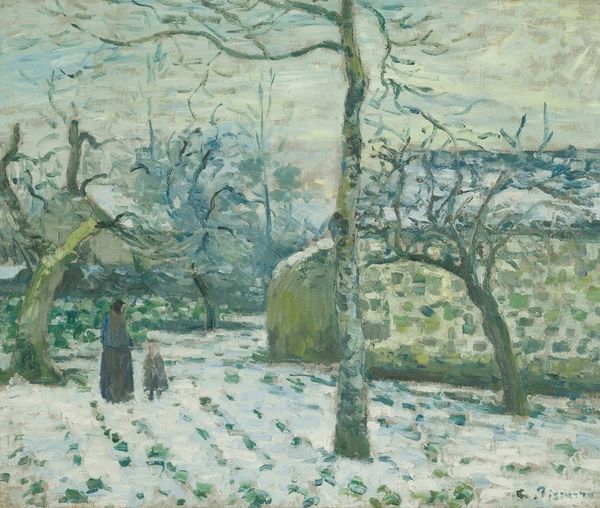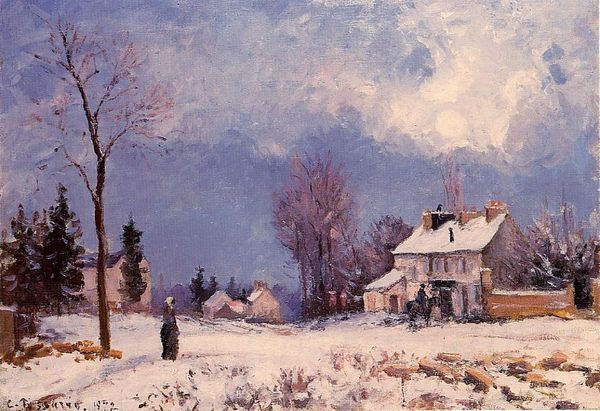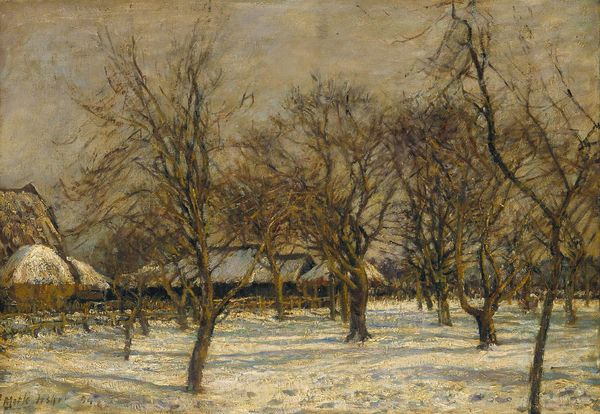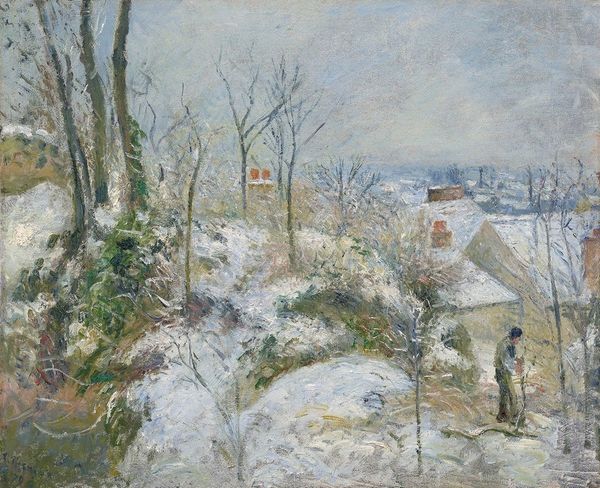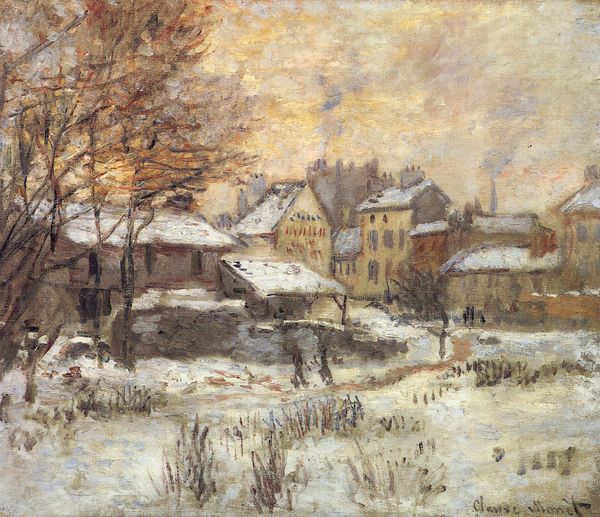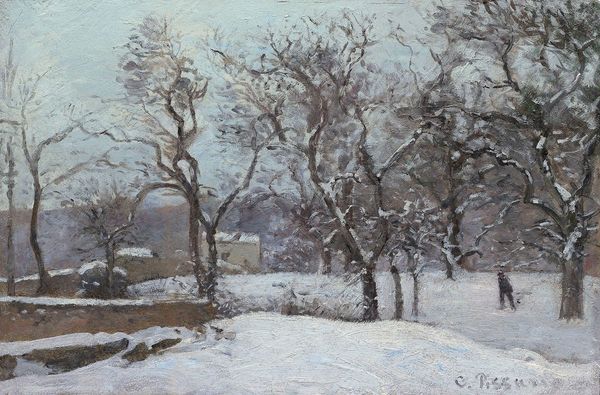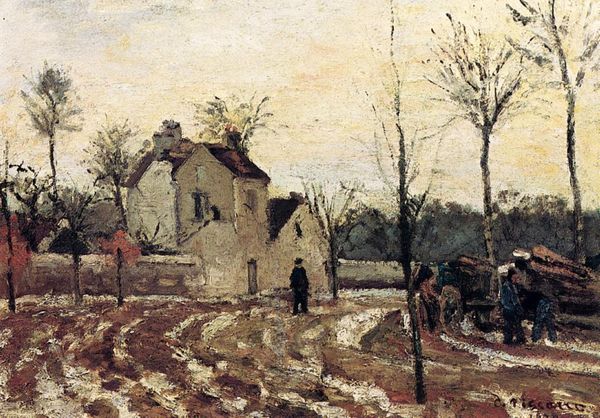
painting, plein-air, oil-paint
#
snow
#
painting
#
impressionism
#
plein-air
#
oil-paint
#
landscape
#
impressionist landscape
#
oil painting
#
naturalism
Copyright: Public domain
Editor: Here we have Camille Pissarro's "Snow at Montfoucault," painted in 1874 using oil paints. It definitely captures the somber stillness of winter in the French countryside. I’m curious, how do you interpret this work, considering its historical and social context? Curator: It’s fascinating to consider Pissarro’s work through the lens of social realism. Though seemingly a serene landscape, we need to acknowledge the realities of rural life in 19th-century France. The painting prompts us to question who inhabits this space. Is it a celebration of nature or a commentary on labor and land ownership? Editor: That’s a perspective I hadn’t considered. I was more focused on the Impressionistic style, the brushstrokes and light, that sense of fleeting beauty. Curator: Exactly, the Impressionistic style itself was revolutionary, breaking from academic traditions and challenging social norms in its own way. Pissarro, in particular, often depicted peasant life without idealization. We should look into how this artistic choice represents class struggles. Editor: So, you’re saying even a landscape painting can be politically charged? Curator: Absolutely. Art never exists in a vacuum. By showing the everyday lives of those often overlooked, Pissarro subtly critiques the dominant social structures. And by painting ‘en plein air’, it democratized not just the subject, but also the production of art. Editor: This makes me consider Impressionism beyond its aesthetic appeal. Thanks, it definitely gave me a lot to consider! Curator: Indeed! It’s a reminder to keep asking ourselves, whose stories are being told, and whose are being left out of the frame?
Comments
No comments
Be the first to comment and join the conversation on the ultimate creative platform.

